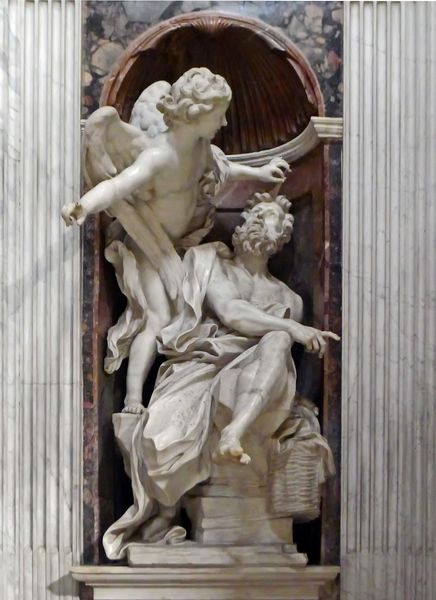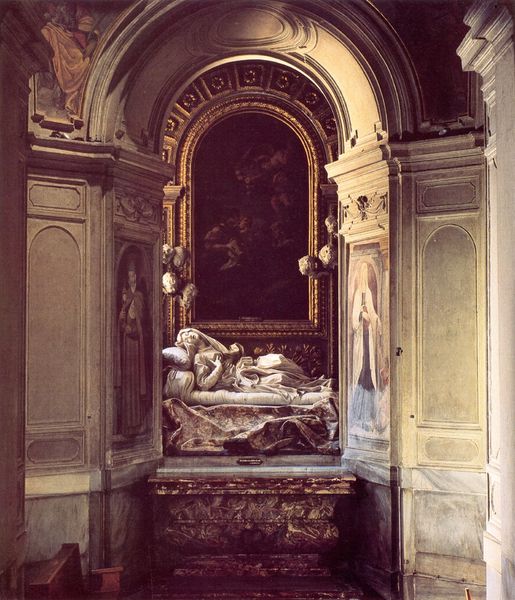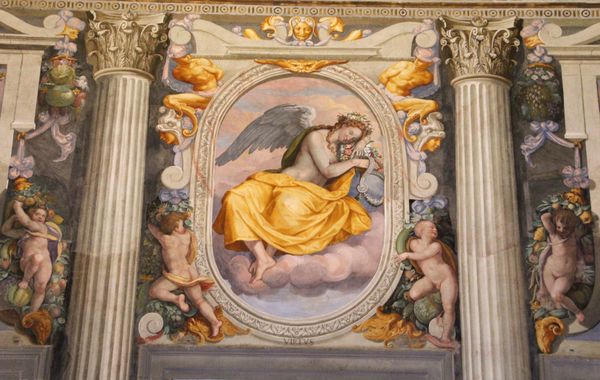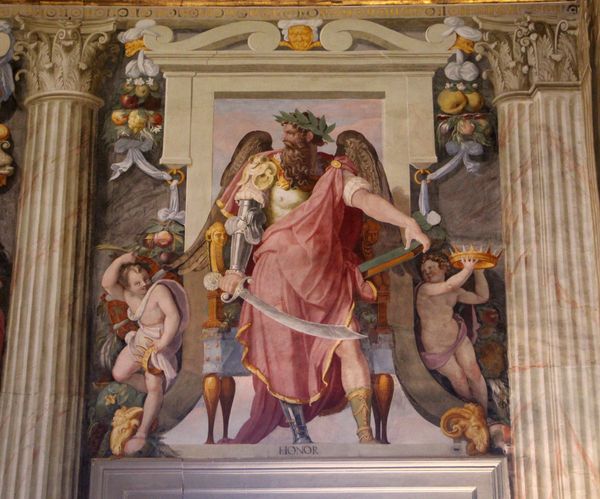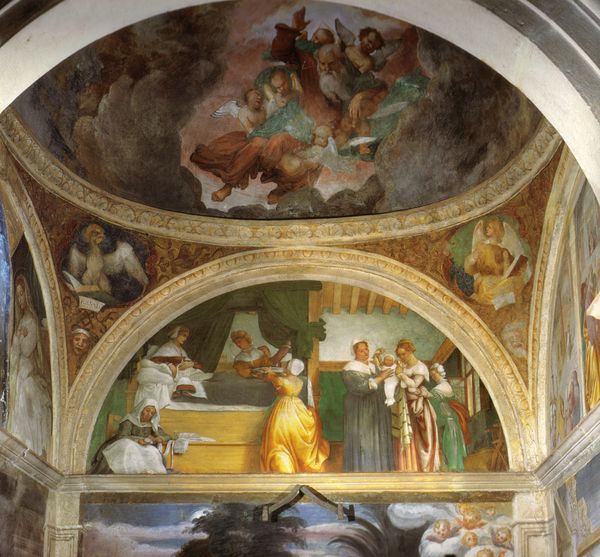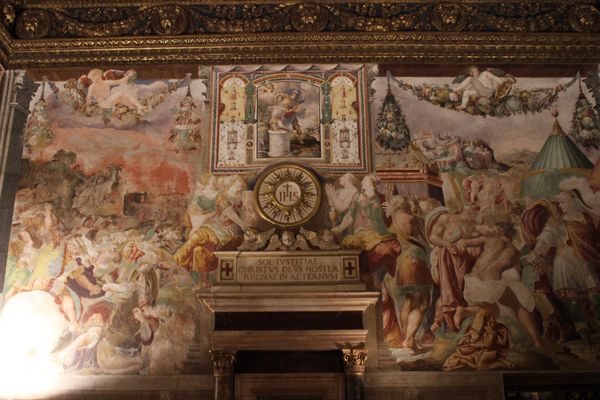
The Ecstasy of St. Teresa (within the Cornaro Chapel) 1652
0:00
0:00
gianlorenzobernini
Santa Maria della Vittoria, Rome, Italy
carving, sculpture, marble
#
carving
#
baroque
#
figuration
#
sculpture
#
christianity
#
history-painting
#
marble
Copyright: Public domain
Editor: We’re looking at Bernini’s "The Ecstasy of Saint Teresa," a marble carving from 1652, housed within the Cornaro Chapel in Rome. The dramatic lighting immediately catches the eye, and the figures seem to float in a state of intense emotion. What stands out to you in terms of its construction and overall aesthetic? Curator: The mastery lies in Bernini’s ability to manipulate marble to evoke such a dynamic and sensual experience. Consider the lines: Teresa’s drapery spirals dramatically, contrasting sharply with the smooth, almost androgynous form of the angel. The composition uses a pyramidal structure, grounding the ecstasy in a tangible form. Editor: It's fascinating how the texture differs so much between the figures. I didn't notice that initially. Curator: Precisely. Bernini plays with contrasting textures and varied planes. Note the polished, luminous skin juxtaposed with the deep undercuts of the drapery that create shadows, adding volume and a sense of instability. How does that instability affect your perception? Editor: It definitely heightens the feeling of spiritual turmoil, like everything is in flux. Do you think the gilded bronze rays add too much to the scene, visually speaking? Curator: They complete the work, unifying sculpture, painting, and architecture. Think of those gilded rays as pure surface, purely for the pleasure of the eye. By drawing our attention to light's effect, the sculpture challenges traditional form. Editor: I see now. I was so focused on the figures, I nearly missed that effect. Curator: These combined features demonstrate the revolutionary approach Bernini used. It compels engagement not only on an intellectual or narrative level, but on a purely visceral one. Editor: Thanks to your breakdown of form, lighting and texture, I will now look more at all aspects that work together within sculpture. Curator: It's imperative when looking at artwork to engage from various views, especially regarding visual expression.
Comments
No comments
Be the first to comment and join the conversation on the ultimate creative platform.


